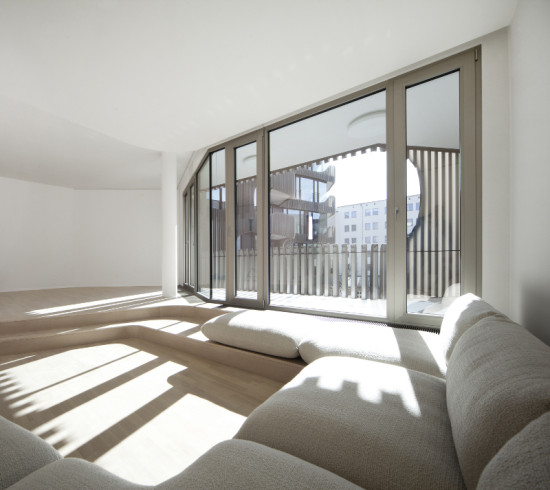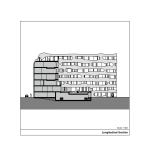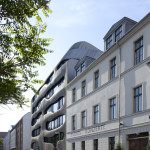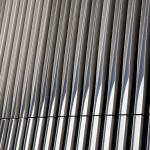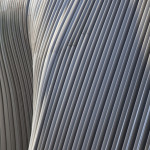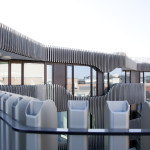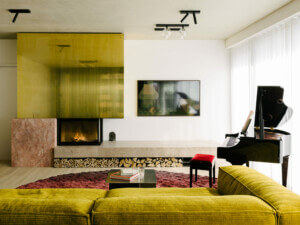
Ribbons of laser-cut metal lamellas envelop a glass curtain wall.
J. MAYER H. Architects designed the sculptural anodized aluminum facade of JOH3, a Berlin apartment building located near both the Friedrichstrasße and Museum Island, as a contemporary echo of its historic neighbors. “The project is located in an old part of Berlin, where there are lots of facades with stucco detail,” said project architect Hans Schneider. “We tried to do something as rich with a new design, something like Jugendstil [the German Art Deco movement] but in a modern translation.”
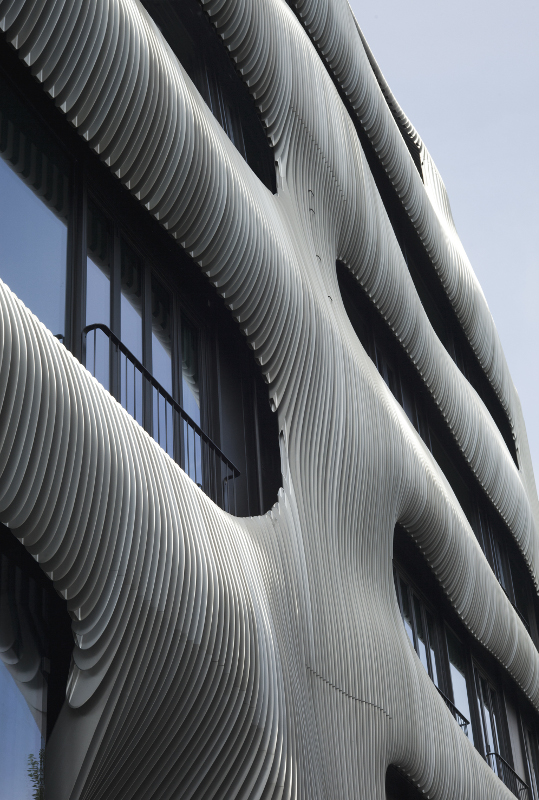
The architects settled on floor-to-ceiling glass wrapped in undulating ribbons of laser-cut aluminum lamellas. They explored the general shape using a physical model, but completed the bulk of the design work in Rhino. Early on, said Schneider, the aluminum tubes that give the envelope its texture “were a bit thicker, a different shape,” but had to be adjusted to trim down the cost of materials. From these basic components, J. MAYER H. Architects made strategic subtractions to deliver a three-dimensional effect. “In the beginning there are tubes, and then we cut out the shapes of the lamellas always different,” explained Schneider. “There are nice interferences when you cut it.”
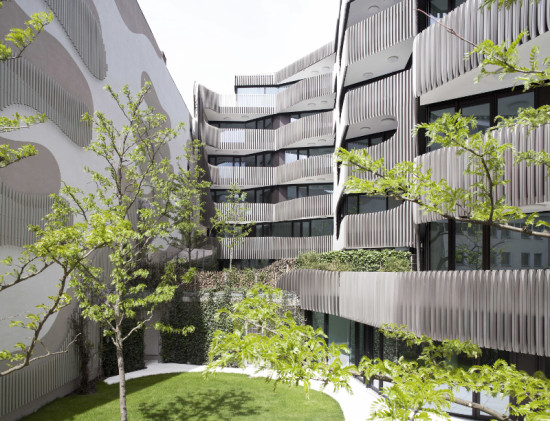
- Facade Manufacturer Rupert App GmbH+Co., WICONA
- Architects J. MAYER H. Architects
- Facade Installer Rupert App GmbH+Co.
- Location Berlin
- Date of Completion Spring 2012
- System Laser-cut anodized aluminum lamellas over glass curtain wall
- Products anodized aluminum tubes, glass by Saint-Gobain Glass
In addition to providing aesthetic interest, said Schneider, “these lamellas protect the interior from the outside without really closing it up.” From straight on, the facade is transparent. From other angles, the overlapping aluminum blades produce varying degrees of opacity. Thus the apartment’s occupants benefit from daylighting without sacrificing privacy. “It’s still quite light, that was the idea,” said Schneider, “to have a really light building in the city but still have [protection].”
As well as responding to the stucco detail on the older buildings nearby, JOH3’s organic facade, which was manufactured by Rupert App GmbH+Co. (app) and WICONA and installed by app, draws on the idea of incorporating landscape into the city. This theme amplified in the building’s interior courtyard, where the metal ribbons move in and out of plane to accommodate balconies overlooking a grassy circle. It is also present in the interior. “The floor plans don’t have these rectangular rooms, it’s all more organic,” said Schneider. The balconies and folding windows by Saint-Gobain Glass providing seamless transitions from inside to outside, while each apartment’s lounge is below grade, “so you have different levels, types [of spaces] to make it more like landscape.” The dropped floor from the apartment above is visible in the ceiling below. “That’s also very interesting,” said Schneider, “because you can feel how the different stories merge together.”
JOH3’s facade initially drew skepticism from some Berliners, who pressed for a more traditional stucco design. “We had to discuss [it] several times with the city, of course, and especially with the preservation people. There were quite a lot of discussions about color, shape, and material,” said Schneider. But the lamellas, which enact historic and natural references in modern materials, eventually won over the naysayers. “They liked the design totally in the end.”
